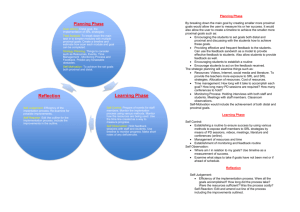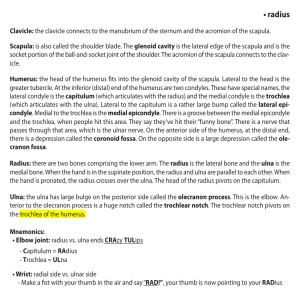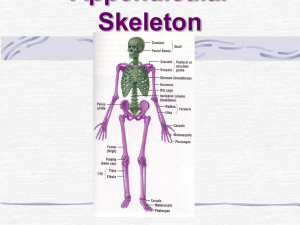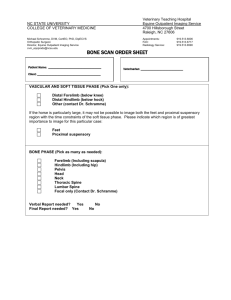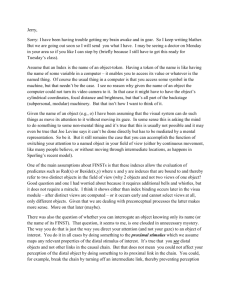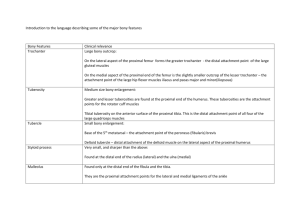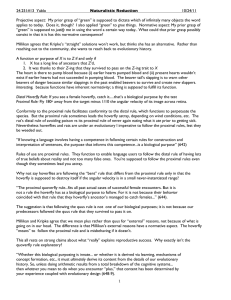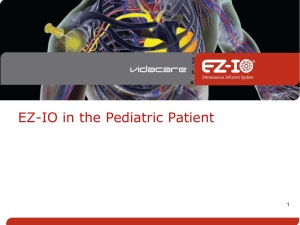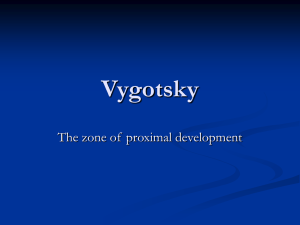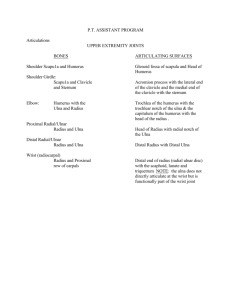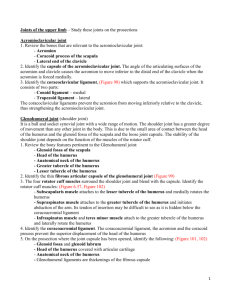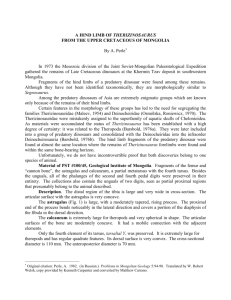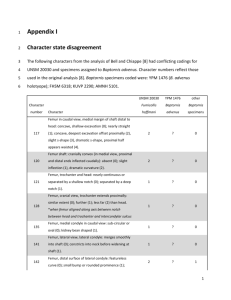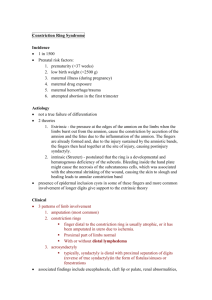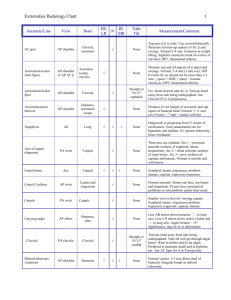12633 - Museum of London
advertisement
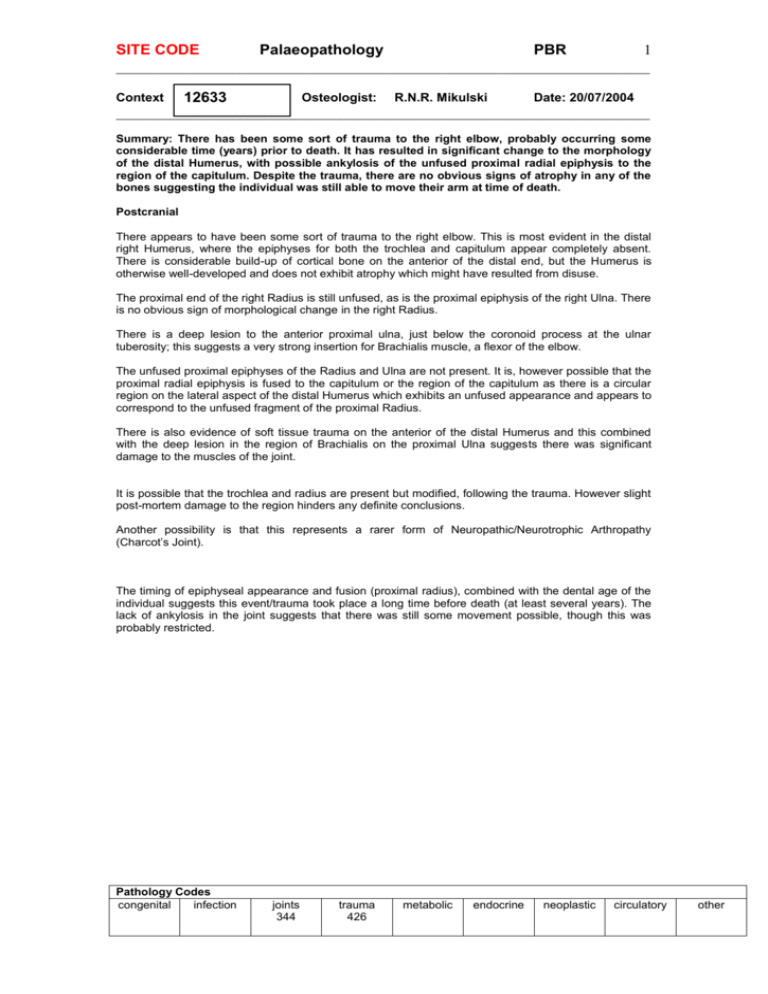
1 SITE CODE Palaeopathology PBR _____________________________________________________________________ Osteologist: R.N.R. Mikulski Date: 20/07/2004 12633 _____________________________________________________________________ Context Summary: There has been some sort of trauma to the right elbow, probably occurring some considerable time (years) prior to death. It has resulted in significant change to the morphology of the distal Humerus, with possible ankylosis of the unfused proximal radial epiphysis to the region of the capitulum. Despite the trauma, there are no obvious signs of atrophy in any of the bones suggesting the individual was still able to move their arm at time of death. Postcranial There appears to have been some sort of trauma to the right elbow. This is most evident in the distal right Humerus, where the epiphyses for both the trochlea and capitulum appear completely absent. There is considerable build-up of cortical bone on the anterior of the distal end, but the Humerus is otherwise well-developed and does not exhibit atrophy which might have resulted from disuse. The proximal end of the right Radius is still unfused, as is the proximal epiphysis of the right Ulna. There is no obvious sign of morphological change in the right Radius. There is a deep lesion to the anterior proximal ulna, just below the coronoid process at the ulnar tuberosity; this suggests a very strong insertion for Brachialis muscle, a flexor of the elbow. The unfused proximal epiphyses of the Radius and Ulna are not present. It is, however possible that the proximal radial epiphysis is fused to the capitulum or the region of the capitulum as there is a circular region on the lateral aspect of the distal Humerus which exhibits an unfused appearance and appears to correspond to the unfused fragment of the proximal Radius. There is also evidence of soft tissue trauma on the anterior of the distal Humerus and this combined with the deep lesion in the region of Brachialis on the proximal Ulna suggests there was significant damage to the muscles of the joint. It is possible that the trochlea and radius are present but modified, following the trauma. However slight post-mortem damage to the region hinders any definite conclusions. Another possibility is that this represents a rarer form of Neuropathic/Neurotrophic Arthropathy (Charcot’s Joint). The timing of epiphyseal appearance and fusion (proximal radius), combined with the dental age of the individual suggests this event/trauma took place a long time before death (at least several years). The lack of ankylosis in the joint suggests that there was still some movement possible, though this was probably restricted. Pathology Codes congenital infection joints 344 trauma 426 metabolic endocrine neoplastic circulatory other
